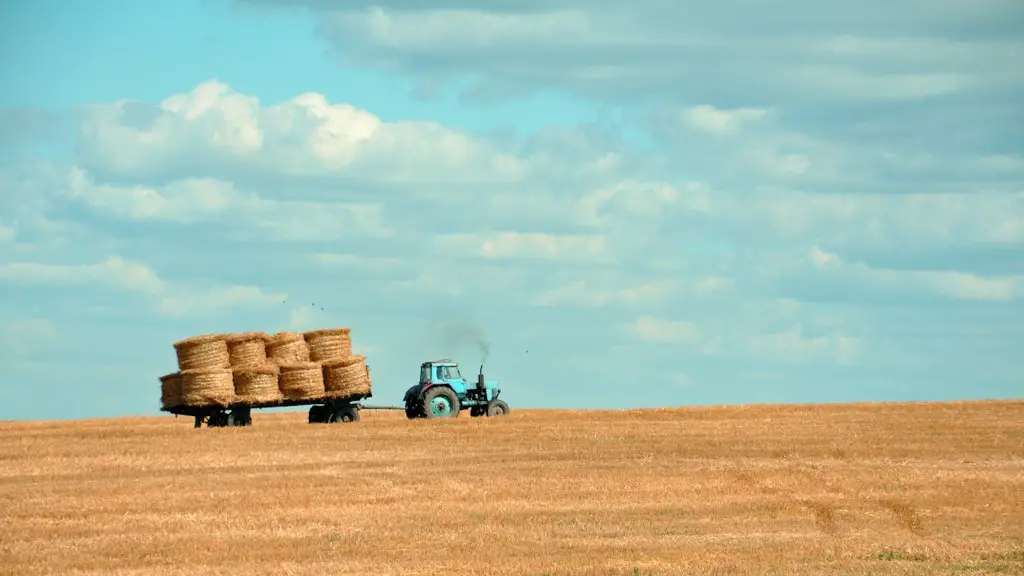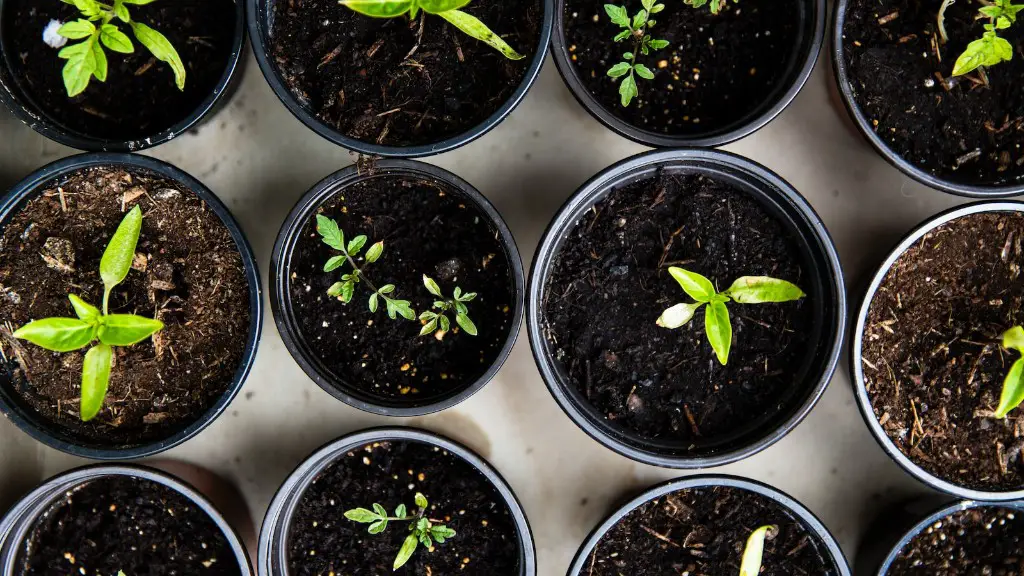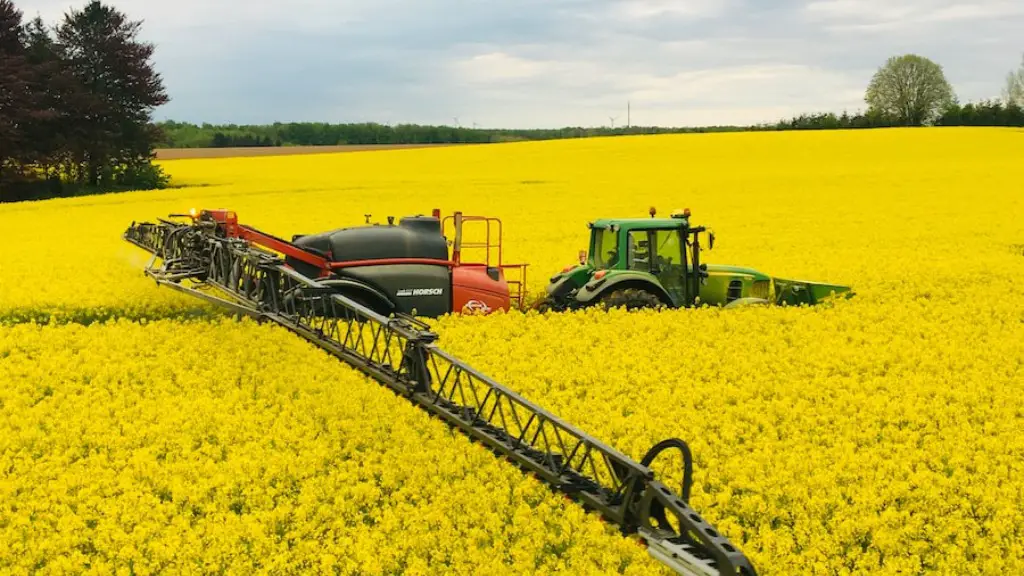Agricultural storage facilities are essential to the production of healthy and safe food, as well as improving the efficiency of the food system. They are necessary to maintain quality, shelf-life, and flavor of commodities, while also protecting them from biotic and abiotic agents that can cause diseases and pests. It is important to understand the purpose, structure, and design of these structures, in order to optimize their effectiveness.
Storage facilities are integral to the agricultural process, as they allow farmers to store food for future use or sale. This storage can be used to manage seasonal demand and availability, or to preserve perishable items. Storage facilities are also critical in managing food supply chains, as they help to reduce food waste. Additionally, they can improve food safety by providing a controlled environment in which commodities can be stored.
There are various types of storage facilities, including traditional, advanced, and pre-cooling systems. Traditional methods involve storing items in standard containers, shelves, or other rudimentary structures. Advanced facilities may utilize specialized equipment such as cold rooms and freezers. Pre-cooling systems are designed to reduce the temperature of the commodity quickly, thus preserving its flavor and shelf-life.
When designing storage facilities, it is important to consider the size, shape, and internal environment of the facility. The optimal size of a facility depends on the amount of commodities that need to be stored, as well as the type of commodities being stored. The shape of the facility should also be determined to ensure that the stored commodities can be stored as safely as possible. In addition, the internal environment should be controlled and monitored to ensure that the stored items are not exposed to extreme temperatures, moisture levels, or excessive animals or insects.
Furthermore, storage facilities need to be properly secured and maintained to ensure that the commodities remain safe and their shelf-life is extended. This includes protecting the facility from theft, weather damage, and other sources of contamination. Proper ventilation and sanitation is also important to keep the facility free from pests and other contaminants. Additionally, regular maintenance should be conducted to inspect and repair any structural damages.
In conclusion, storage facilities are essential to the agricultural industry, as they enable farmers and producers to store their products safely and with minimal waste. It is important to understand the different types and designs of storage facilities, in order to ensure their optimal use and effectiveness. Furthermore, proper maintenance and security protocols should be enforced, in order to preserve the integrity and shelf-life of the commodities being stored.
Temperature Requirement for Agricultural Storage Facilities
Temperature is one of the most important requirements for agricultural storage facilities. Keeping the internal temperature of a storage facility at an optimal range is essential, as it is essential for maintaining the quality and shelf-life of commodities stored inside. To ensure that the internal temperature of a storage facility is kept within the required range, it is essential to include in the design elements such as insulation, temperature control systems, heating, and ventilation.
Insulation is important for keeping the internal temperature of a storage facility consistent and ideal for the stored commodities. This can be achieved by fitting an insulation layer such as fiberglass and/or polyurethane, to the walls and ceilings of the facility. It is also important to use insulation according to the facility’s location and climate, as this will affect the temperature of the facility.
Temperature control systems are also necessary, as they can be used to regulate the temperature of a facility, keeping it within the optimal range. This can be achieved through the use of fans, air conditioners, dehumidifiers, air coolers, and other temperature controllers. The type of system chosen should depend on the size and shape of the storage facility, as well as the desired temperature range.
In addition to temperature control systems, heating and ventilation can also help to keep the internal temperature of a storage facility in the optimal range. Heat can be provided through the use of heating elements, solar energy, or other heating devices. Ventilation is also necessary for maintaining temperature by replacing the warm air inside the facility with cooler air from outside.
Overall, it is essential to include the necessary elements in the design of a storage facility to ensure that the optimal internal temperature is maintained. Insulation, temperature control systems, heating, and ventilation are all essential components of an agricultural storage facility, and should be carefully designed to ensure that the stored commodities remain safe and of high quality.
Humidity Requirement for Agricultural Storage Facilities
Humidity is another important requirement for agricultural storage facilities, as it is essential for preserving the quality and shelf-life of commodities stored inside. Too much humidity can damage the stored items, while excessively dry conditions can also cause problems. To ensure the optimal humidity inside a storage facility, it is important to include elements such as insulation, dehumidifiers, ventilation, and humidifiers in the design.
Insulation is important for retaining the humidity inside the facility and preventing unwanted changes in the climate. High-density fiberglass and/or insulated materials should be used to line the walls and ceilings, as this will help to trap the humidity inside. In addition, the type of insulation chosen should be appropriate to the location and climate of the facility, as this will affect the humidity levels.
Dehumidifiers are also necessary for managing humidity inside a storage facility. These systems can be used to decrease the humidity in a facility and ensure that the commodities are stored in a dry environment. It is important to choose a dehumidifier system based on the size of the facility, as this will determine the amount of moisture that can be removed from the air.
Ventilation is also essential for managing the humidity of a storage facility, by replacing the humid air inside with drier air from outside. The type of ventilation system chosen should be based on the size and shape of the facility, as this will affect its effectiveness. Additionally, the ventilation system should be positioned correctly to ensure that the humid air is replaced with drier air.
Lastly, humidifiers can also be used in agricultural storage facilities to maintain the desired humidity levels. These systems can be used to increase the internal humidity, ensuring that the stored commodities remain safe and of high quality. It is important to choose a humidifier that is compatible with the size and shape of the facility, as this will determine its effectiveness.
In conclusion, maintaining an optimal internal humidity is essential for any agricultural storage facility. Insulation, dehumidifiers, ventilation, and humidifiers are all important components of a storage facility, and should be carefully designed to ensure the optimal humidity for the stored commodities.
Security Requirements for Agricultural Storage Facilities
Aside from temperature and humidity, security is also an important requirement for agricultural storage facilities, as it is essential for protecting the stored commodities from external threats. To ensure that a storage facility is properly secured, it is important to include elements such as fences, locks, alarms, and surveillance systems.
Fences are essential for providing a physical barrier between the facility and the outside world. Depending on the size and shape of the facility, different materials and designs can be used to construct the fence. It is important to choose an appropriate fence and install it correctly, in order to provide maximum security.
Locks are essential for keeping the facility secure from external threats, such as pests and thieves. It is important to choose high-quality locks that are resistant to tampering and equipped with safety mechanisms to prevent unwanted access. Additionally, the locks should be positioned correctly and regularly inspected and maintained to ensure maximum security.
Alarms are also important for ensuring the security of a storage facility. Alarm systems can be used to detect unauthorized entry into the facility and alert authorities. It is important to choose an alarm system that is compatible with the size and shape of the facility, as this will determine its effectiveness. Additionally, the alarm system should be regularly tested and maintained.
Finally, surveillance systems can also be used to monitor the internal and external conditions of a storage facility. These systems can be used to detect any suspicious activity and alert the appropriate authorities. It is important to choose a surveillance system that is compatible with the size of the facility and its environment, as this will determine its effectiveness. Additionally, the surveillance system should be regularly inspected and maintained.
Overall, it is important to ensure that the necessary security elements are included in the design of a storage facility. Fences, locks, alarms, and surveillance systems are all essential components of an agricultural storage facility, and should be carefully designed to ensure that the stored commodities remain secure.
Maintenance Requirements for Agricultural Storage Facilities
Maintaining a storage facility is essential for preserving the stability of the environment, as well as preventing external threats such as pests and diseases. Regular maintenance should be conducted in order to inspect and repair any structural damages, and to ensure that the stored commodities remain safe.
Structural maintenance is essential for preventing damage to the walls, floors, and ceilings of the facility. It is important to inspect the structural components of the facility regularly and repair any damage immediately. This should include checking for cracks, holes, and other signs of wear and tear. Additionally, preventive measures such as waterproofing and insect repellents should be taken to ensure maximum structural integrity.
Ventilation is also important for maintaining the environment of a storage facility. It is essential to ensure that the ventilation system is working correctly and providing fresh air to the facility. This can be achieved through regular inspection and maintenance of the system, as well as using appropriate air filters. Additionally, the ventilation system should be regularly checked for dust and dirt accumulation, in order to keep the air clean and free of contaminants.
Sanitation is also essential for maintaining the internal environment of a storage facility. Sanitation protocols should be enforced to ensure that the facility is free of pests and other sources of contamination. This includes regular cleaning and disinfection of the facility, as well as using appropriate pest control methods.
Overall, it is important to ensure that the necessary maintenance elements are implemented in order to preserve the integrity of a storage facility. Structural maintenance, ventilation, and sanitation protocols are all essential for maintaining the environment of an agricultural storage facility, and should be conducted regularly to ensure that the stored commodities remain safe.





